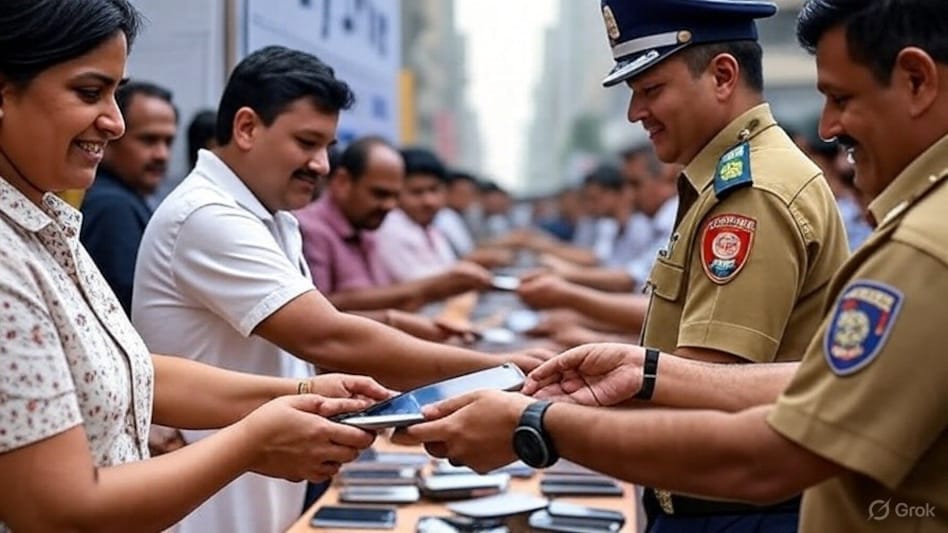Mumbai Police has launched a campaign to return stolen mobile phones to their rightful owners, which has received a tremendous response. Police have returned 8000 mobile phones in 64 days. This was made possible due to the hard work of the Department of Telecommunications’ Central Equipment Identity Register (CEIR) and officers deployed at police stations. This campaign was monitored by senior police officers themselves.
Police launched a campaign in June this year focusing on prioritizing and returning stolen mobile phones across the city. From June 18 to August 21 this year, meaning in just two months, more than 8000 mobile phones have been returned to various police stations and then to their owners.
This figure shows that on average, approximately 125 mobile phones were returned and recovered daily. The practice of tracking mobile phones via IMEI has been long-standing, but now an initiative launched by the Department of Telecommunications, the Central Equipment Identity Register (CEIR), is helping to consistently track stolen mobile phones, whether they are within the state or being used in other states.
Since July, special events have been held at various police stations in Mumbai, where hundreds of mobile phones have been returned to their owners, which were either ‘accidentally found’ or sold by someone without knowing they were stolen handsets.
How did the campaign start?
Top officers of Mumbai Police believed that stolen mobile phones were affecting the common person, so it was necessary to prioritize the return of these phones. The Police Commissioner of Mumbai directed all zones of Mumbai Police to focus on this issue.
After obtaining the IMEI information of stolen phones, using CEIR and then using CEIR to locate the current user and contact them for return. Each zonal DCP and then each concerned police station would have a dedicated team working on this issue.
The Joint Police Commissioner (Crime) oversees this entire process and takes regular updates, while the DCP Cyber Crime is the nodal officer for tracking and returning stolen mobiles.
How does CEIR work?
When a complaint of a stolen mobile phone is received, the IMEI number is marked by entering it into the CEIR database. This helps in locking the SIM being used and a message is sent. Additionally, if a new SIM is installed in the mobile phone, a notification is sent to the portal, which informs the police officers tracking the stolen mobile phone.
Subsequently, police officers from the concerned police station contact the person using the phone and inform them that the phone they are using is a stolen mobile phone and a theft case is registered against it. The police officer asks that person to return the phone to the concerned police station by hand or, if they are far away, by courier.
Many times, if the mobile phone is from outside the state and there is a language-related problem, the person using the mobile phone receives an automated system message, which includes the police officer’s details and asks them to return the mobile phone to the police station with the address where the mobile was to be returned.
This initiative is proving effective because users of stolen phones are told that if they return the handset, they will face a police case. A senior police officer said, ‘Victims are also not interested in the case; they want their mobile phone back, so this initiative helps in getting the mobile phone back and we are getting good results from it.’
Positive results of this initiative are emerging, and police stations across Mumbai are now receiving couriers with stolen mobile phones even from remote states and cities. The process of returning these mobile phones to their original owners has been simplified by police officers helping to return the handsets quickly.





